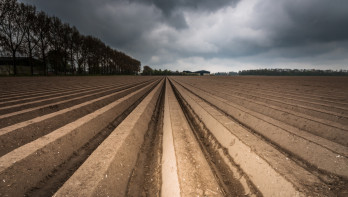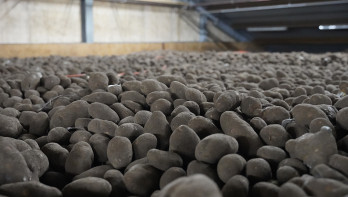Analysis Potatoes
What effect does the growing production of French fries have on the supply chain?
In the past 8 years, the processing of potatoes into fries and related products has increased at an unprecedented rate. Every self-respecting processor has at least doubled its processing capacity in Europe. Now that Europe seems fully built, European processors are setting their sights on countries such as China, India, Australia, and even 'the-home-land-of-fries', America, to further expand their market dominance.
In the last six months, hardly a week goes by without a potato processor announcing new plans to further grow its processing capacity at existing locations or by developing new construction elsewhere in the world.
Below is a selection of recently completed or upcoming expansions or new construction for French fry production by Belgian and Dutch potato processors.
- Agristo
New factory in Escaudœuvres/ investment €350 million and North Dakota/ investment $450 million - Aviko
Capacity expansions in Poland, China, and Western Europe - Clarebout
New factory in Dunkirk/ 500,000 tons additional potato processing - Ecofrost
New Factory in Péronne/ 200,000 tons additional potato processing - Farm Frites
New factory in Dooen (Australia)/ investment €256 million - Lutosa
Expansion in Waregem/ investment €200 million - McCain
Expansion in Lewedorp/ investment €75 million and plans for a production location in Germany
Processors calculated that the economy will continue to develop well and that prosperity will also continue in emerging countries. It is important that no logistical problems arise (think of corona or the issues around the Panama Canal) and that there will be no global trade war.
As a potato grower, you should be happy about this, because apparently the demand for potatoes is so high that it cannot be met. An old law in the market says: more demand than supply leads to rising prices. This has been visible in contract prices in recent years and by paying record prices for free potatoes at certain times in the season.
But are the trees growing to the sky? Since the beginning of this century, there has been growth in worldwide fry production every year.
First decade: 2000–2010
During this decade, the global demand for frozen fries grew at an average of 2–3% per year. This was fueled by the growth of fast-food chains in emerging markets such as China, India, and Latin America, as well as the rise of retail sales of frozen fries. In dollars, this meant an estimated growth from $7 billion in 2000 to around $11 billion by the end of 2010.
Second decade: 2010–2020
Frozen fry production reached an estimated 17 million tons globally in 2019. The major markets in Europe (where potato consumption is high) and North America (where fast-food chains are dominant) remain the largest consumers, but Asia and Africa also show strong growth potential. The market value in the second decade of this century rose to around $20 billion. This price increase is due to demand for premium and healthy alternatives (such as air-fried fries or organic fries), which led to a shift in the market. Additionally, prices per ton increased due to the shift to higher quality and varieties.
Third decade: 2020 to present
Fry production continues to increase, although growth in some markets seems flat due to market saturation in developed countries. It is expected that global fry production will reach about 20 million tons per year in 2025. The fry market is expected to exceed $25 billion this year, with a growth rate of about 4% per year. Growth is driven by continued demand from both fast-food chains and supermarkets and the demand for innovative products, such as fries made from alternative ingredients like sweet potatoes or vegetables.
At the beginning of 2000, there was an excess of potato processing capacity in Europe, leading to an oversupply of fries. Processors were struggling. Fry prices have been marginal for years, and a good potato price depended mainly on a poor harvest or a good harvest. Around 2010, the excess processing capacity seemed to have been eliminated, and fry supply kept pace with demand. This resulted in a doubling of the fry market value over 10 years.
In 2021, after Russia's invasion of Ukraine and the sharp price increase of the necessary raw materials for fry production, the export value of Dutch fries per ton increased from €810 to €1,390, a rise of over 70%. It was a golden time for processors, leading to the urge for further scaling up fry and related product production anywhere in the world.
The global demand for fries and high prices proved not to be a guarantee for continuous growth. This market also experiences what is known as a pig cycle. Expanding faster than the growing demand results in an oversupply of products, which in turn leads to a price war in the fry distribution channel. There are several examples where overcapacity in processing industries resulted in price wars. In such cases, the supplier often pays the price. After all, if the price of the processed product is under pressure, the processor tries to buy the raw material cheaper to avoid sacrificing too much margin. In that case, the fry potato grower also partly pays the price of the overcapacity of an overly ambitious industry.
For now, this does not apply to the current potato processing and fry distribution. The potato market is by no means predictable when looking at the current geopolitical relations. Making meaningful expectations is impossible due to the behavior of Donald Trump. Each processor must determine their strategy for the coming years: where can fry production be expanded or started and in which regions will it stabilize?
© DCA Market Intelligence. Op deze marktinformatie berust auteursrecht. Het is niet toegestaan de inhoud te vermenigvuldigen, distribueren, verspreiden of tegen vergoeding beschikbaar te stellen aan derden, in welke vorm dan ook, zonder de uitdrukkelijke, schriftelijke, toestemming van DCA Market Intelligence.


